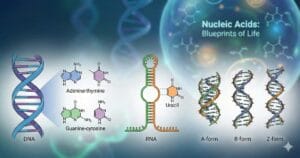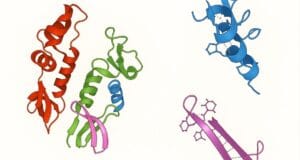
COMPETITIVE EXAM MCQs SERIES of ENVIRONMENTAL SCIENCE for UGC-NET/JRF, SLET, ARS, GATE, and other entrance tests – Environmental Pollution and Control – Soil Microorganisms and their Functions.
Syllabus Outline
- Diversity, taxonomy, ecology, and physiology of soil microbes.
- Role of bacteria, fungi, archaea, protozoa, and viruses in soil.
- Microbial roles in nutrient cycling and organic matter decomposition.
- Soil structure formation, plant-microbe interactions, and bioremediation.
- Soil microorganisms and soil health, fertility, and ecosystem sustainability.
- Soil microbial isolation, enumeration and characterization.
This quiz contains the concept-based most frequently asked 25 MCQs of “Environmental Pollution and Control – Soil Microorganisms and their Functions“. Each question has a single correct/most appropriate answer.
*****
1. Arbuscular mycorrhizal fungi form symbiotic associations with plant roots to enhance:
a) Soil compaction
b) Water-holding capacity
c) Nutrient uptake
d) Soil pH
2. Which soil microorganism plays a key role in cellulose and lignin decomposition?
a) Bacteria
b) Fungi
c) Algae
d) Protozoa
3. Conversion of ammonia to nitrate is primarily carried out by:
a) Nitrogen-fixing bacteria
b) Denitrifying bacteria
c) Ammonifying bacteria
d) Nitrifying bacteria
4. Mycorrhizal fungi assist in plant nutrient uptake by:
a) Breaking down complex organic molecules
b) Fixing atmospheric nitrogen
c) Absorbing and transporting minerals to plant roots
d) Increasing soil acidity
5. Which soil microorganism is responsible for nitrate to nitrogen gas conversion, thereby completing the nitrogen cycle?
a) Nitrifying bacteria
b) Denitrifying bacteria
c) Nitrogen-fixing bacteria
d) Ammonifying bacteria
6. Azotobacter and Azospirillum are examples of soil bacteria known for their ability to:
a) Fix atmospheric nitrogen
b) Decompose cellulose
c) Produce methane gas
d) Synthesize antibiotics
7. Which soil microorganism plays a crucial role in dead plant decomposition?
a) Protozoa
b) Actinomycetes
c) Nematodes
d) Algae
8. Which soil microorganism is responsible for atmospheric nitrogen gas into ammonia conversion?
a) Nitrifying bacteria
b) Denitrifying bacteria
c) Nitrogen-fixing bacteria
d) Ammonifying bacteria
9. The process of nitrogen fixation is inhibited by the presence of:
a) Oxygen
b) Carbon dioxide
c) Nitrogen gas
d) Methane
10. Soil microorganisms known as siderophores are involved in the:
a) Fixation of atmospheric nitrogen
b) Decomposition of cellulose
c) Uptake of iron by plants
d) Production of methane gas
11. Mycorrhizal fungi improve plant nutrient uptake by:
a) Producing toxins that kill pathogens
b) Increasing soil compaction
c) Extending the root surface area
d) Decreasing soil pH
12. Which soil microorganism is involved in soil aggregate formation?
a) Bacteria
b) Fungi
c) Algae
d) Viruses
13. Which of the following soil microorganisms is known for its ability to fix atmospheric nitrogen in symbiotic association with leguminous plants?
a) Azotobacter
b) Rhizobium
c) Nitrosomonas
d) Pseudomonas
14. Which of the following is a gram-positive soil bacterium known for producing a toxin or crystal protein (Cry), lethal to caterpillars?
a) Bacillus thuringiensis
b) Lactobacillus
c) Escherichia coli
d) Rhizobium
15. What will be the number of bacterial cells after the successful completion of the 5th generation, if the starting number of cells is 100 in the soil?
a) 32
b) 320
c) 3200
d) 500
16. Which one of the following soil microorganisms is an example of autotrophs?
a) Cyanobacteria
b) Agrobacterium
c) Rhizobium
d) Saccharomyces
17. The relationship of nitrogen-fixing bacteria with root legumes is an example of:
a) Mutualism
b) Protocooperation
c) Commensalism
d) Neutralism
18. Which organism can transform NH4+ into NO2–?
a) Nitrosomonas
b) Nitrobacter
c) Pseudomonas
d) Rhizobium
19. What is the possible path of nitrogen movement in the environmental compartment?
a) Soil-animals-plants-air-soil
b) Soil-air-plants-air-animals-soil
c) Air-soil-plants-animals-soil-air
d) Air-animals-soil-plants-air
20. What is secreted by the legume root and taken up by the rhizobial symbionts to activate the expression of plasmid-encoded nod (nodulation) genes?
a) Glycolipids
b) Flavonoids
c) Chitolipooligosaccharides
d) Leghemoglobin
21. Which of the following is an example of sulfate-reducing bacteria?
a) Desulfovibrio
b) Pseudomonas
c) Nitrobacter
d) Thiobacillus
22. What is the main function of VAM?
a) Production of plant growth hormones
b) Production of poison
c) Production of proteins
d) Production of lipids
23. Which of the following is an example of iron-oxidizing archaeon?
a) Ferroplasma acidarmanus
b) Clostridium
c) Bacillus
d) Anthrax
24. Which category do the majority of soil extremophiles belong to?
a) Eukarya
b) Archaea
c) Bacteria
d) Viruses
25. Which of the following forms of nitrogen can be used by microorganisms in place of molecular oxygen?
a) NH4+
b) NO3–
c) N2
d) Ammonia
*****
Previous: Analysis of Soil Quality
Next: Radioactive, Thermal and Marine Pollution
References
- Sylvia, David M., Fuhrmann, Jeffry J., Hartel, Peter G., and Zuberer, David A. (2015) Principles and Applications of Soil Microbiology, Pearson, 3rd edition.
- Paul, Eldor A., Clark, Frank E., and Harris, J. Michael (2015) Soil Microbiology, Ecology, and Biochemistry, Academic Press, 4th edition.
- Sharma, S. K. (2019) Soil Pollution and Its Management, Khanna Publishers, 1st edition.

